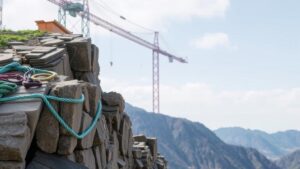Recovering Artifacts in Areas Known for Prehistoric Animal Corridors
Recovering Artifacts in Areas Known for Prehistoric Animal Corridors
The study of prehistoric animal corridors, which are pathways used by ancient fauna, provides significant insights into the behavioral patterns and migration routes of these species. Simultaneously, these corridors often serve as prime locations for discovering artifacts, providing a window into the human societies that coexisted with these animals. This article delves into the methodologies, significance, and challenges of recovering artifacts from these fascinating locales.
The Importance of Prehistoric Animal Corridors
Prehistoric animal corridors were not merely routes for migration; they were critical to the survival of both flora and fauna. e corridors are often characterized by their ecological niches that supported a variety of wildlife, particularly during the Pleistocene epoch. Understanding these pathways helps in piecing together the ecosystem of that time and understanding human interactions with wildlife.
For example, the Bering Land Bridge, which connected present-day Alaska and Siberia, was not only crucial for animal migration but also facilitated the movement of early human populations into North America. Archaeological evidence from sites along this corridor, such as the famous Clovis sites, has unveiled a plethora of artifacts indicating sophisticated tool-making and cultural practices. According to a study by Waters and STAFFORD (2007), Clovis points, which are distinctive stone tools, have been found in abundance along these corridors, showcasing early hunter-gatherer strategies targeting large game animals like mammoths and bison.
Methodologies for Recovering Artifacts
Recovering artifacts in areas known for prehistoric animal corridors involves several well-established archaeological methods. These can be categorized into survey, excavation, and analysis.
- Field Survey: Comprehensive field surveys use techniques such as systematic surface collection and subsurface testing to identify potential archaeological sites. This can involve walking in transects across known corridors to spot surface artifacts.
- Excavation: Once potential sites are identified, stratigraphic excavation allows archaeologists to explore layers of soil where signs of human activity might exist. process must be meticulous to preserve contextual information.
- Analysis: After artifacts are recovered, they undergo various analyses, including typological classification and radiocarbon dating, to establish their age and cultural significance.
For example, at the Vero Beach site in Florida, an excavation revealed a unique assemblage of prehistoric tools associated with extinct species, providing insights into the interactions between humans and megafauna. The established layer chronology suggested that humans coexisted with giant ground sloths and other megafauna approximately 14,000 years ago.
Challenges in Artifact Recovery
Despite the potential for significant discoveries, several challenges complicate the recovery of artifacts in prehistoric animal corridors. These challenges range from environmental factors to ethical considerations.
- Environmental Factors: Natural erosion, sedimentation, and vegetative growth can obscure or damage artifacts. In areas prone to flooding or erosion, continuous monitoring and preventive conservation techniques are necessary.
- Legal and Ethical Considerations: Legislation concerning excavation and artifact recovery, such as the Archaeological Resources Protection Act (ARPA), mandates strict guidance to prevent the looting and illegal trade of artifacts. It is crucial for researchers to navigate these laws to conduct responsible and ethical research.
A case study exemplifying these challenges is the ongoing work at the site of the Mammoth Site in South Dakota. Here, hundreds of mammoth bones have been uncovered, but the excavation is limited by both the legal status of the site and concerns regarding the ecological impact of ongoing excavations.
Case Studies and Real-World Applications
Case studies from various regions highlight the importance of recovering artifacts in prehistoric animal corridors. For example, the La Brea Tar Pits in Los Angeles have presented a wealth of fossils attributed to a variety of prehistoric animals. While the focus is often on fauna, numerous associated human artifacts provide a glimpse into the lifestyles of ancient human populations who interacted with these animal species.
Another prime example is found at the site of the 12,000-year-old Monte Verde in Chile, where evidence of human presence alongside extinct mammals has been uncovered. The artifacts found suggest a complex society that utilized the resources provided by the rich flora and fauna characteristic of these prehistoric corridors.
Actionable Takeaways
For researchers and enthusiasts in the field of archaeology, it is critical to:
- Understand the historical significance of prehistoric animal corridors and their implications for human history.
- Employ rigorous and ethically responsible excavation methodologies to recover artifacts.
- Stay informed about legal frameworks surrounding archaeological sites to ensure compliance and sustainability.
- Participate in interdisciplinary collaborations that can enhance the interpretation of findings from these critical archaeological landscapes.
To wrap up, the recovery of artifacts in areas known for prehistoric animal corridors not only enriches our understanding of human history but also highlights the intricate relationships between humans and their environments. As we continue to explore these ancient pathways, the insights gained will contribute to a more comprehensive understanding of our shared past.


